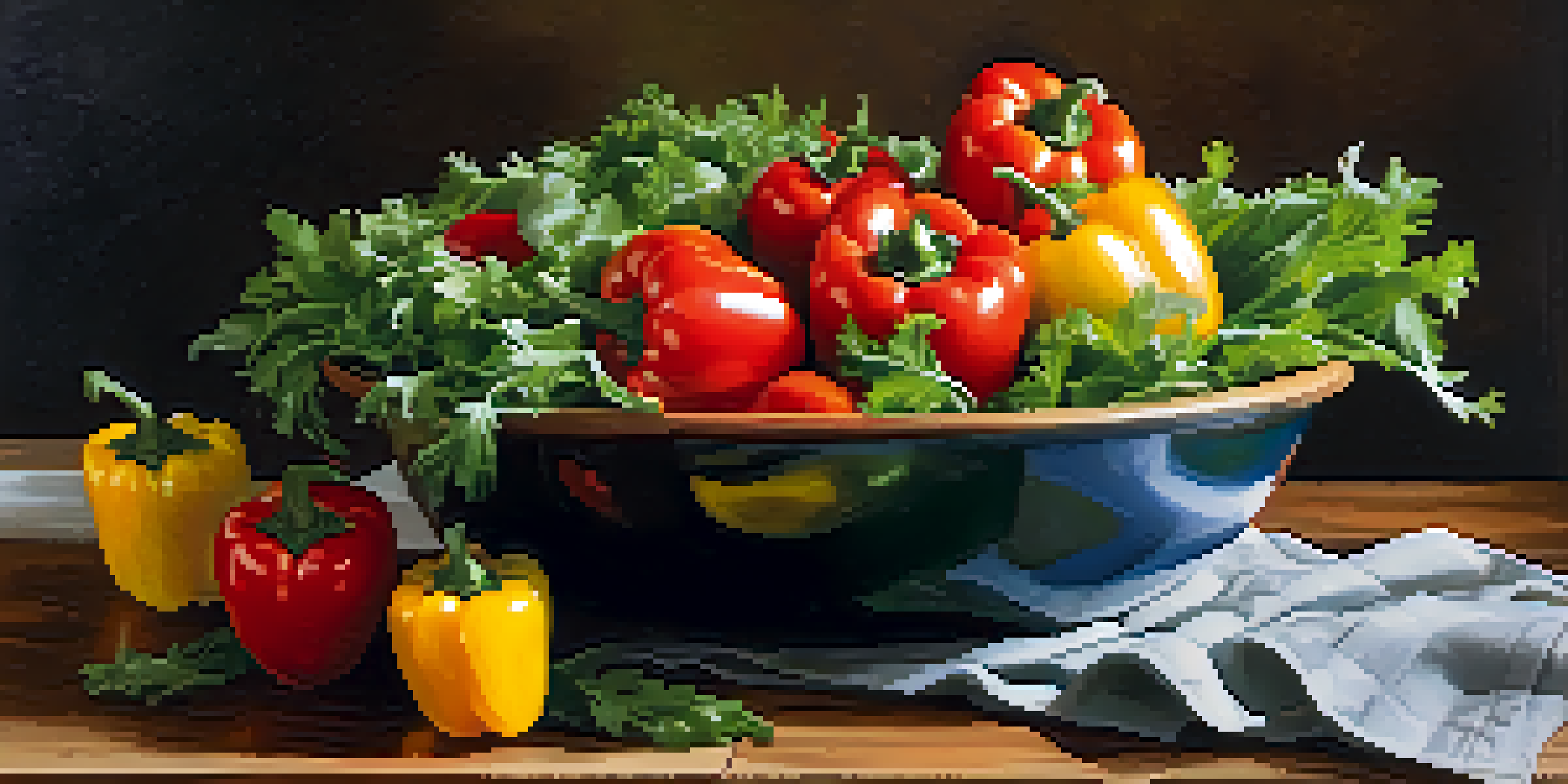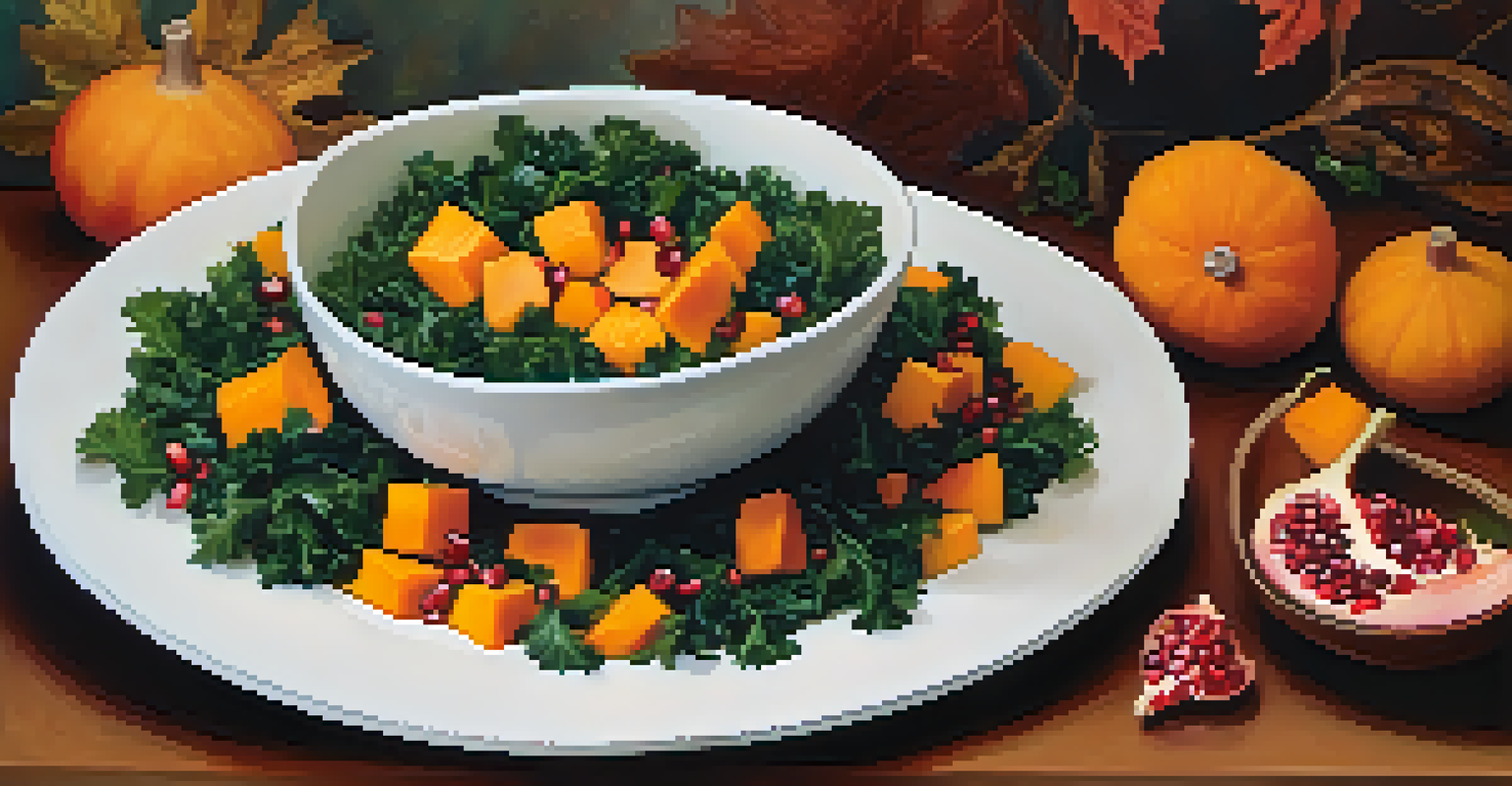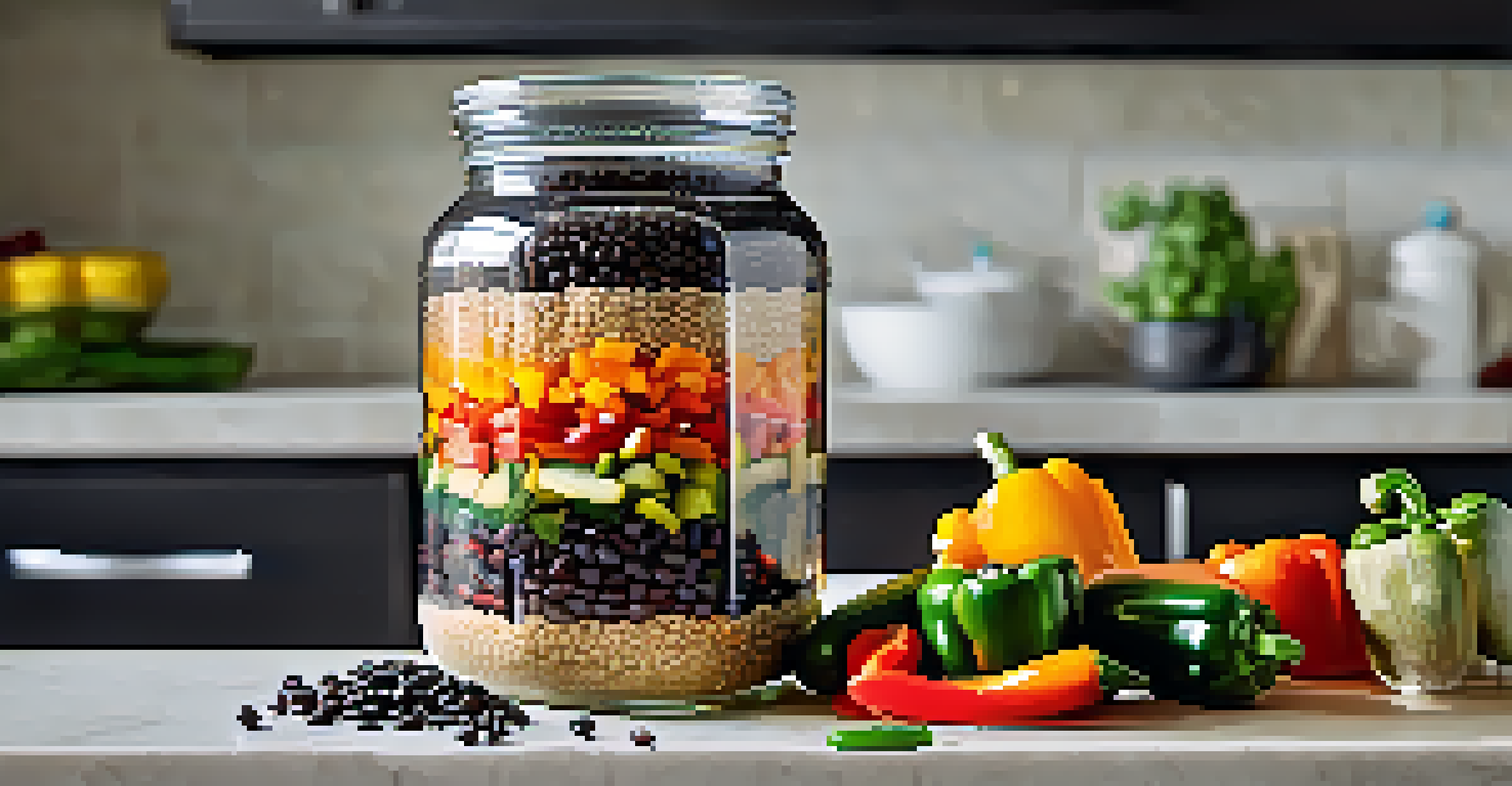Color Pairing: Aesthetic and Nutritional Harmony in Meals

Understanding Color Theory in Food Presentation
Color theory isn't just for artists; it's vital in food presentation too. The way colors interact can influence our perception of taste and freshness. For instance, vibrant greens paired with rich reds can evoke a sense of healthiness and vitality in a dish.
Color is the keyboard, the eyes are the harmonies, the soul is the piano with many strings.
Consider a salad featuring dark leafy greens alongside bright red tomatoes and yellow bell peppers. This combination not only looks appetizing but also packs an array of nutrients. Each color often represents different vitamins and minerals, making your meal not just a feast for the eyes but also for your body.
By understanding basic color theory, you can create visually stunning meals that also happen to be nutritionally balanced. The next time you're preparing a dish, think about how the colors can enhance both its aesthetic appeal and health benefits.
The Psychological Impact of Color in Food Choices
Did you know that colors can influence our appetite? Studies show that certain colors can stimulate hunger, while others might suppress it. For example, red and yellow are often associated with fast food because they can create a sense of urgency and excitement.

Conversely, blue is known to be an appetite suppressant. That's why you might notice fewer blue foods on your plate. This psychological connection can guide you in choosing colors that not only look good but also encourage healthy eating habits.
Color Influences Food Appeal
The combination of vibrant colors in food presentation can enhance our perception of taste and promote healthier eating habits.
When planning meals, consider the psychological effects of the colors you use. By strategically selecting colors, you can create a dining experience that is both enjoyable and beneficial for your well-being.
Nutritional Benefits of Colorful Foods
Eating a variety of colorful foods can lead to a more balanced diet. Different colors often signify different nutrients; for example, orange foods like carrots and sweet potatoes are rich in beta-carotene, which is great for vision. Meanwhile, blue and purple foods like blueberries and eggplants offer antioxidants that help combat free radicals.
Eating colorful foods is a simple way to ensure you're getting a variety of nutrients.
Incorporating a spectrum of colors into your meals ensures you’re getting a wide range of vitamins and minerals. This variety can improve your overall health and vitality. Think of your plate as a canvas; the more colors you add, the more nutritious the picture becomes.
So next time you prepare a meal, aim for a rainbow on your plate. Not only will it look appealing, but it will also serve your body with the nutrients it craves.
Creating Aesthetic Meals with Seasonal Ingredients
Using seasonal ingredients not only supports local farmers but also enhances the colors in your meals. Seasonal produce tends to be more vibrant and flavorful, making it easier to create visually appealing dishes. For instance, fall brings rich oranges, deep reds, and earthy greens that can elevate any meal.
Imagine a harvest bowl filled with roasted butternut squash, kale, and pomegranate seeds. The combination of colors not only looks enticing but also represents the peak of nutrient availability during that season. This approach encourages a connection with nature and the food you consume.
Seasonal Ingredients Boost Nutrition
Using seasonal produce not only supports local farming but also makes meals more colorful and flavorful, promoting a nutritious diet.
By focusing on seasonal ingredients, you can create meals that celebrate color and flavor while promoting nutritional balance. It's a simple way to harmonize your plate with the changing seasons.
Pairing Colors for Nutritional Synergy
Certain color combinations can enhance the nutritional benefits of your meals. For example, pairing a source of fat, like avocado (green), with colorful vegetables can improve the absorption of fat-soluble vitamins like A, D, E, and K. This synergy not only tastes great but also maximizes health benefits.
Consider making a vibrant salsa with tomatoes, corn, and black beans. The red, yellow, and black colors represent a variety of nutrients that work together to support heart health. This principle of pairing colors can elevate your cooking and nutritional game.
When you think about how colors complement each other nutritionally, you open the door to innovative meal creations. Experiment with different combinations to discover flavors and health benefits that surprise you.
Aesthetic Meal Prep for Everyday Eating
Meal prepping doesn't have to be boring! By incorporating color into your meal prep, you can make healthy eating more exciting. Use colorful containers and arrange your meals in a way that highlights the vibrant ingredients you've chosen.
For instance, layer quinoa, black beans, and colorful bell peppers in a clear jar for a visually appealing lunch that's ready to go. Not only will you look forward to eating it, but you'll also enjoy the delicious mix of flavors and nutrients.
Cultural Pairings Enrich Meals
Exploring colorful food pairings from various cultures can inspire innovative meal planning that is both visually appealing and nutritionally beneficial.
Remember, the more visually appealing your meals are, the more likely you are to stick to your dietary goals. Make meal prep a fun and creative process by focusing on aesthetics alongside nutrition.
Celebrating Cultural Color Pairings in Cuisine
Many cultures around the world have embraced colorful food pairings, showcasing the beauty of culinary diversity. Take, for example, the vibrant dishes of Mediterranean cuisine, which often feature bright vegetables, herbs, and spices. These combinations not only look stunning but also offer a wealth of flavors and health benefits.
Exploring different cultural cuisines can inspire you to experiment with your own meal planning. You might find that pairing colors in a specific way is a tradition that enhances both taste and nutrition. Think of colorful curries from India, where turmeric, spinach, and tomatoes come together for a feast for the eyes.

By celebrating these cultural practices, you can enrich your own cooking and enjoy meals that are both aesthetically pleasing and nutritionally beneficial. Embrace the global palette in your kitchen!